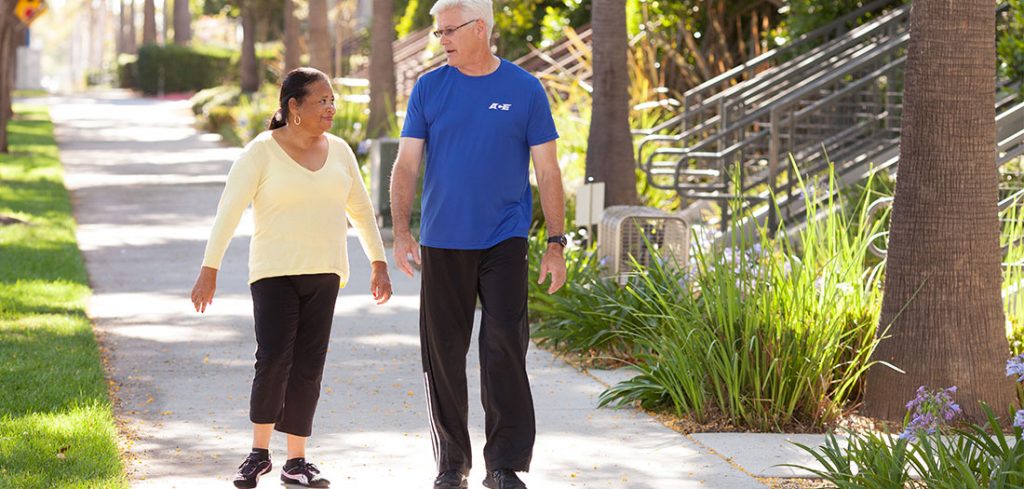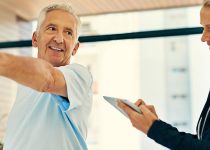Cardio Exercises for Active Agers

Working with older adult clients can be hugely rewarding, particularly because regular physical activity can play a crucial role in helping them maintain their independence and ability to perform activities of daily living. However, there are special considerations to keep in mind when designing their training programs.
Why Traditional Cardio Plans May Not Work
Many older adults will come to you with illnesses and conditions that can make traditional cardio training challenging and possibly dangerous. Common medical conditions you are likely to see in these clients include high blood pressure, heart disease, osteoporosis and more. Others may experience limited mobility, lack of balance, poor vision and general weakness.
While this population can certainly train to improve cardiorespiratory strength and circulation, common aerobic exercises such as running, elliptical training, circuit training and even walking on a treadmill may need to be avoided unless they have a clear Health and Exercise History form. Even so, it is essential that all older adult clients who participate in any type of exercise program be cleared by their doctor before beginning training.
Water Aerobics
Exercising in the water is an excellent form of low-impact cardio for all populations, but it is especially effective for older adults. Water offers an ideal form of resistance and all of the range of motion that an older adult with limited mobility can handle. Plus, the water is a great environment for those who have balance issues, because the risk of falling is minimized.
Common water-based exercises include treading water, bicycle kicks, and shoulder circles and presses. Special attention should be paid to the posterior muscles by including leg kickbacks, arm pushbacks and back extensions. More advanced exercisers may use specialized Styrofoam water dumbbells for added resistance.
As long as the water aerobics program is staffed properly and designed according to participants’ limitations and abilities, older exercisers can expect a fun and effective cardio workout.
NuStep Machine
Not everyone likes working out in the pool. For those who prefer to keep dry while exercising the heart, try a Nustep machine. This low-to-the-floor exercise equipment is both easy to get into and to operate.
One consideration when designing a cardiovascular workout is incorporating movement of the entire body. While a recumbent bike is usually chosen as a safe mode of exercise for older adults, recumbent bikes only require the legs to move. Nusteps move both the legs and the arms at a user-controlled pace, making this machine an excellent option for incorporating whole-body movements.
Clients should be encouraged to begin at their own pace and on the lowest resistance level. As conditioning improves, increase the resistance on the arms and legs, and work toward exercising for 30 minutes or more.
Walking
Walking is one of the most underrated forms of cardiovascular training, yet it can be a highly effective training tool for people who are unable to perform traditional cardio workouts.
The best way for older clients to benefit from walking as a form of cardio is to simply have them walk at their own pace and use duration as a baseline and an indicator of improvement. Skip the intervals and HIIT training and have your clients walk for at a moderate pace for as long as they feel comfortable. For extra motivation, encourage them to find walking buddies who will walk with them daily.
If walking outside, advise your clients to skip their walk if their is in climate weather, including high heat and humidity, as well as cold weather. if senior citizens are using a treadmill, be they use proper form and follow protocol and are supervised.
Pay Extra Attention
Here are a few more things to consider when working with older adult clients:
- Observe their breathing, perspiration and skin tone pre- and post-workout.
- The talk test is a more useful indicator of intensity for this group than the Ratings of Perceived Exertion (RPE) scale or a heart-rate monitor.
- Review and make adjustments to your clients’ workouts based on their results and your observations.
- Contact a medical professional when necessary.
Make Them Feel Special
Lastly, some older adults have limited interaction with other people throughout their daily lives. You may be their only appointment of the day, so be sure to make their time with you special.


